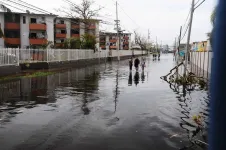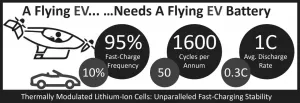(Press-News.org) For years, psychology researchers have treated peer rejection and social network isolation as being somewhat interchangeable when it comes to early adolescence; it was thought that if kids fell into one of those two groups, they fell into the other. A recent study finds there is actually little overlap between the groups - and socially isolated kids face different risks.
"Broadly speaking, there are two types of socially marginalized groups in early adolescence," says Kate Norwalk, lead author of the study and an assistant professor of psychology at North Carolina State University. "There are kids who face peer rejection, meaning they are disliked by other kids; and there are kids who are experiencing social network isolation, meaning they don't have a group of friends. Historically, I think researchers have treated these two groups as being the same.
"What I wanted to explore with this study is whether these two groups are actually distinct from each other, and what that means for the well-being of these kids. We know a lot about rejected kids - there's decades of research on them. But we really haven't paid any attention to isolated kids. And, as it turns out, they are very different."
For their study, Norwalk and her collaborators drew on data from 1,075 students in 5th, 6th and 7th grade. The students were surveyed twice a year for two years. Peer rejection was measured by asking the students who they "liked least" in their class. Social network isolation was measured by asking kids to describe who in their class "hangs out together;" kids who were not named were considered isolated, because they were not identified as being part of any peer group. Students were also asked which students in their classes exhibited a range of specific behaviors. Lastly, students were asked whether they thought peers would help them if they were being bullied.
Simply put, the researchers found that there were clear distinctions between kids who were rejected and kids who were isolated.
"There was very little overlap between the two groups," Norwalk says. "Most of the kids who were liked least in a class still had some sort of peer group; and the kids who didn't have a peer group weren't especially disliked."
In fact, one of the only things the two groups had in common was that being in either the rejected group or the isolated group was associated with an increased risk of victimization - meaning that students in either group were more likely than other kids to be picked on or bullied.
But while each group was also associated with other behavioral challenges, the nature of those challenges varied significantly.
Students in the rejected group were more likely than other kids to exhibit aggressive behavior, such as bullying and disrupting class. They were also less likely to exhibit prosocial behavior, such as being kind and doing well in the classroom.
This was not the case with students in the isolated group, who were more likely to exhibit internalizing behaviors, such as being shy and withdrawn. Kids in the isolated group were also the only ones who generally reported that they would not expect support from their peers if they were bullied.
"This study shows that students facing peer rejection and students dealing with social isolation have different profiles and face different risks," Norwalk says. "What's more, isolated kids may be more likely to fly under the radar precisely because they're not causing problems in class or bullying other kids.
"But children grappling with social isolation clearly need support. The internalization behaviors we see associated with isolated kids in this study are often early symptoms of mental health challenges. And because they are isolated, teachers and parents may be less likely to identify them as victims of bullying - even as they struggle with less peer support against bullying," Norwalk says.
"I think we - parents, teachers, counselors, researchers - need to find ways to better identify and support those kids."
INFORMATION:
The study, "Heterogeneity of Social Marginalization in Early Adolescence: Longitudinal Associations with Behavioral and Social Adjustment," is published in the Journal of Youth and Adolescence. The study was co-authored by Helen Milojevich and Jill Hamm at the University of North Carolina at Chapel Hill; Molly Dawes at the University of South Carolina; and Thomas Farmer at the University of Pittsburgh. The research was supported by the Institute of Educational Sciences.
Many contemporary political conflicts are between those who would prioritize the needs of local or national communities and those with a more universal outlook. According to a new study by IASS researcher Silvia Weko, this split between "communitarian" and "cosmopolitan" Europeans is also evident in their attitudes towards European climate policy. Achieving climate neutrality without exacerbating societal divisions within and between countries will require the EU to strike a careful balance.
In political philosophy cosmopolitans and communitarians are frequently characterized as "winners" and "losers" of globalization. ...
UPTON, NY--What happens when very short pulses of laser light strike a magnetic material? A large international collaboration led by the U.S. Department of Energy's (DOE) Brookhaven National Laboratory set out to answer this very question. As they just reported in the Proceedings of the National Academy of Sciences, the laser suppressed magnetic order across the entire material for several picoseconds, or trillionths of a second. Understanding how magnetic correlations change on ultrafast timescales is the first step in being able to control magnetism in application-oriented ways. For example, with such control, we may be able to more quickly write data to memory devices or enhance superconductivity ...
The lack of data is a major bottleneck for many kinds of research, and especially for the development of better medical treatments and drugs. This data is extremely sensitive and, understandably, people and companies alike are often unwilling to share their information with others.
Researchers at the Finnish Center for Artificial Intelligence have developed a machine learning-based method that produces synthetic data on the basis of original data sets, making it possible for researchers to share their data with one other. This could solve the ongoing problem of data scarcity in medical research and other fields where information is sensitive.
The generated data preserves privacy, remaining similar enough to the original data to be used for statistical ...
Researchers at Queen Mary University of London have tested an algorithm on 700,000 patient records in east London, to find out if the data routinely collected by GPs can reveal cases of Familial Hypercholesterolemia - a leading cause of heart attack in young people.
Familial Hypercholesterolemia (FH) is a condition passed down through families that causes extremely high levels of cholesterol in the blood. Without treatment, it can lead to a heart attack at a very young age. FH affects 320,000 people in the UK, the vast majority of whom are unaware they have it.
One method of detection is the 'FAMCAT' (Familial Hypercholesterolemia Case Assertation Tool) which analyses data in GP records - including ...
The ability of stem cells to fix impaired functions of host tissues after transplantation has been a lifesaving breakthrough in treating previously incurable conditions. Much like a coin toss, however, the fate of the transplanted stem cells is unpredictable. They may choose self-renewal, grow into a different kind of tissue, or die.
Spermatogonial stem cells follow the same stochastic fate of unpredictability in outcomes. But a group of fertility scientists led by Hiroshima University's Yoshiaki Nakamura discovered a new method that has favorably flipped the odds and successfully reversed male infertility in mice -- showing great promise for future applications in regenerating human sperm after cancer treatment ...
Normally, the ACE2 enzyme helps regulate our blood pressure. The enzyme sits on the surface of cells, including cells in the lungs, but in connection with COVID-19 it has been found that ACE2 also functions as a gateway for the virus.
"Different viruses have different ways of accessing our cells - as the virus must, of course, get into the cell to be able to replicate, and the coronavirus uses ACE2 to gain access. For this reason, we're investigating what the concentration of ACE2 means for the course of the disease, if you get COVID-19," explains MD and PhD Tue Wenzel Kragstrup from the Department of Biomedicine at Aarhus University. The preliminary results have just been published in the scientific journal PLOS ONE.
As mentioned, ACE2 is part of the surface of the cells, but ...
AUSTIN, Texas -- Puerto Rico is not ready for another hurricane season, let alone the effects of climate change, according to a new study that shows the island's outstanding capacity to produce record-breaking floods and trigger a large number of landslides.
The latest research, appearing in the journal END ...
Jet packs, robot maids and flying cars were all promises for the 21st century. We got mechanized, autonomous vacuum cleaners instead. Now a team of Penn State researchers are exploring the requirements for electric vertical takeoff and landing (eVTOL) vehicles and designing and testing potential battery power sources.
"I think flying cars have the potential to eliminate a lot of time and increase productivity and open the sky corridors to transportation," said Chao-Yang Wang, holder of the William E. Diefender Chair of Mechanical Engineering and director of the Electrochemical Engine Center, Penn State. "But electric vertical takeoff and landing vehicles are very challenging technology for the batteries."
The researchers define the technical requirements ...
Bdelloid rotifers are multicellular animals so small you need a microscope to see them. Despite their size, they're known for being tough, capable of surviving through drying, freezing, starvation, and low oxygen. Now, researchers reporting in the journal Current Biology on June 7 have found that not only can they withstand being frozen, but they can also persist for at least 24,000 years in the Siberian permafrost and survive.
"Our report is the hardest proof as of today that multicellular animals could withstand tens of thousands of years in cryptobiosis, the state of almost completely arrested metabolism," says Stas Malavin ...
The aurora borealis, or northern lights, that fill the sky in high-latitude regions have fascinated people for thousands of years. But how they're created, while theorized, had not been conclusively proven.
In a new study, a team of physicists led by University of Iowa reports definitive evidence that the most brilliant auroras are produced by powerful electromagnetic waves during geomagnetic storms. The phenomena, known as Alfven waves, accelerate electrons toward Earth, causing the particles to produce the familiar atmospheric light show.
The study, published online June 7 in the journal Nature Communications, concludes a decades-long quest to demonstrate experimentally the physical mechanisms for the acceleration of electrons by Alfven waves under ...




